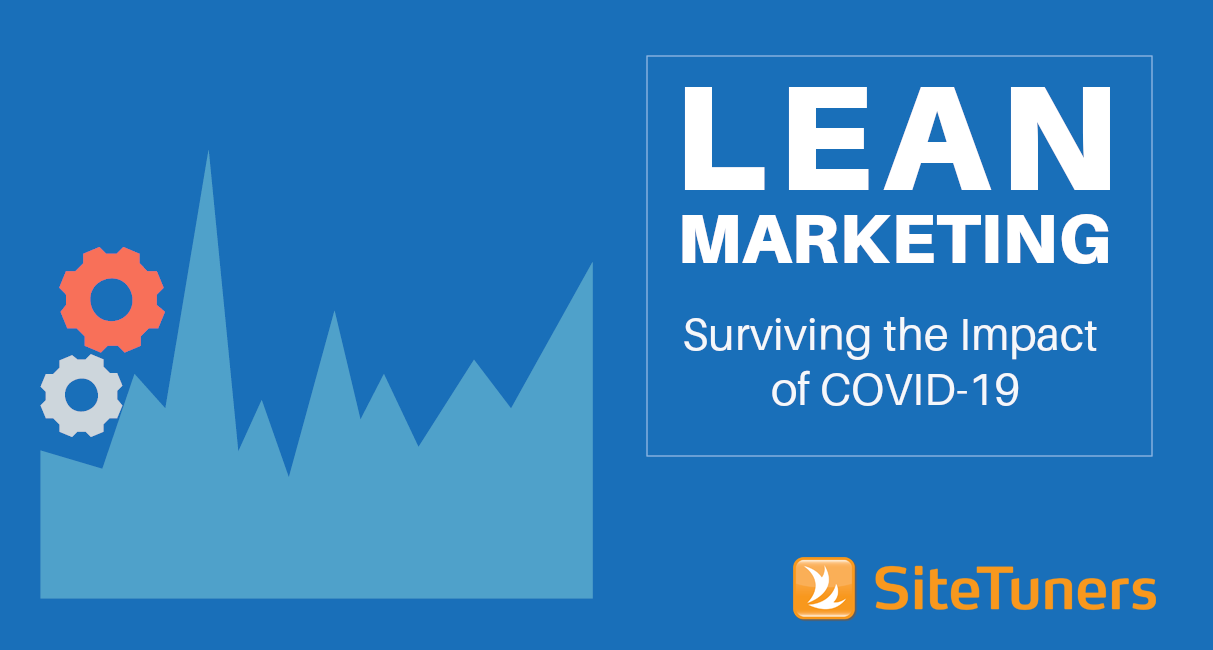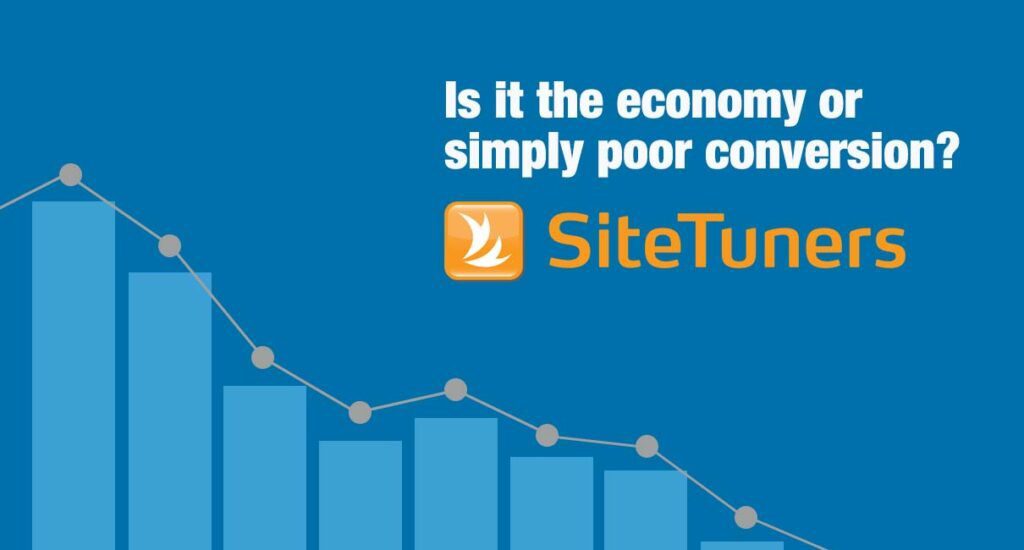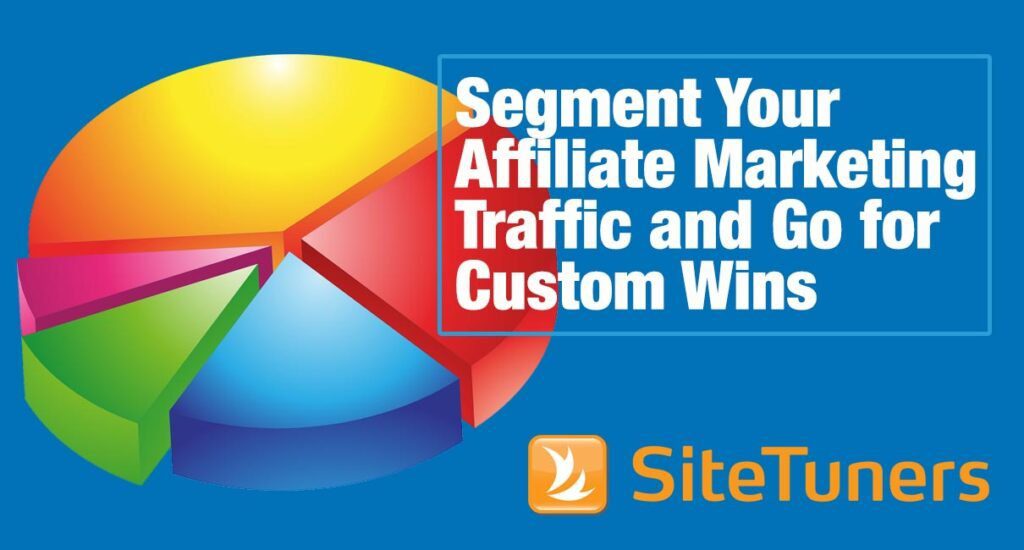Summary: The COVID-19 crisis means lean operations for most marketing teams. There’s a way to operate at a high level even with reduced budgets, but you need to learn to pick your spots.
The COVID-19 situation impacts nearly all businesses in one way or another. And for online marketers, the fluctuations in budgets, site traffic, and conversions can be massive.
If you’re a Delta Airlines or a Clorox, you experienced a massive downturn or upswing. However, for most organizations, the likely scenario is that marketing will be asked to get leaner. A significant number of marketing organizations will be asked to try to get more done with a smaller budget.
What this means for most marketers is that as their operations get leaner, they have to get really good at picking their marketing spend.
Ensure That You Can Track Efficiency Metrics
A lot of marketing teams can track how much they’re spending to get people to see their brand, or to bring a certain number of visitors to their website.
A “good” display campaign for them might be low cost, with a high number of impressions for brand awareness (i.e. cheap eyeballs). A “good” Google Ads campaign for them might be low cost-per-click, bringing in a significant amount of visits (i.e. cheap traffic).
However, when markets face a downturn, this level of data is not enough.
You need efficiency metrics rather than raw traffic or impressions. You’ll want to understand exactly what kind of return on investments (ROI) you’re getting on different channels, so you need to obsess about at least one of these statistics:
Return on Ad Spend (ROAS)
This is what you’re getting back per paid advertising channel. If you spend $500 each on LinkedIn paid ads and Google Ads, how many conversions did you get from each channel? Which one delivered more conversions? That’s what understanding ROAS gets you.
Cost Per Lead (CPL)
This is how much you’re spending for each lead you get. For business-to-business (B2B) sites and other businesses where the sales cycle takes longer to complete, understanding this is of utmost importance.
Customer Acquisition Cost (CAC)
This is how much you’re spending per customer. It’s a pretty good e-commerce figure to track if you understand it per marketing channel. (That is, email, display, PPC, etc. will all have separate CACs, and you’ll see which channels deliver good CACs.)
If you can’t get to that level of detail, you’re not alone.
Often, different tools in your marketing technology stack will need to work together to get you accurate figures for those stats:
- Your Google Ads interface might get you the costs and clicks.
- Your Google Analytics presence might get you the form submission events for paid channels.
- Your Marketo details might get you submissions where you’ve taken action.
Ensuring you have end-to-end tracking to get the efficiency metrics can be messy.
But if you haven’t taken the time to try and align those figures, now is absolutely the time to do it. When downturns hit markets, ad spend is usually one of the first things to get slashed. It’s critical that you understand which forms of ad spend you can afford to lose.
Spend on Highest ROAS Traffic Sources
In a downturn, you’ll often get hit with challenges like this one:
Reduce ad spend by 50%
There are few ways to do this that may be tempting, but these may be pitfalls for your organization:
- Cut 50% of ad spend on all channels equally. Campaigns and channels all don’t deliver the same return on investment.
- Cut the high-cost ad spend channels. Cost-conscious decisions can sound tempting, but some of those high-cost ad buys might be getting you great ROI.
- Cut the low-cost ad spend channels. Some companies may consider the cheaper ads to not deliver as much value, but that may or may not be the case.
Instead, what you can do is run the numbers.
A challenge like “cut your ad spend by half” has an underlying question you need to answer with data:
Which half of your ad spend delivers the most ROI?
If you have taken the time to figure out your ROAS, this question should be relatively easy to answer. You might have a Google Ads campaign that smokes other channels (and other Google Ads campaigns) in terms of conversions. You might have a Facebook campaign that has a moderately high cost but leads to a ton of sales.
The campaigns that you run with the best balance of efficiency, costs, and profitability will be the ones that you cannot afford to cut. Getting hit with a budget cut can be painful, but it’s a lot less painful if you spend on the campaigns with the highest ROAS, and cut the rest.
Understand the Highest Margins
The issue with computing for ROAS based on conversion rate, and using only that to determine ad spend, is that some products are more profitable than others.
If you’re looking at just how many sales you get per x amount of dollars spent, you can accidentally cut a highly profitable campaign that has a relatively low conversion rate. That’s possible because the high margins of particular products might offset the efficiencies.
To avoid shooting yourself in the foot, you need to take high margin products into account when you make campaign decisions.
Understand and Optimize for CLTV
Another metric you might want to consider is customer lifetime value (CLTV). Check if the sales you’re bringing in from ad campaigns tend to skew towards one-time purchases, or repeat buys.
If your slightly more expensive campaign historically brings in more repeat buyers, you need to take that into account. Factor in CLTV into the equation rather than just the individual transaction when deciding which ad spend to cut.
For all your traffic, not just your ad campaigns, you should be thinking about optimizing CLTV to make the most of the visits that you get.
You can try a few things to bring in repeat buyers:
- Loyalty programs. You can use loyalty points or additional offers to keep customers coming back for more business.
- Transactional e-mails. You can upsell related items when sending out order information.
Learn practical tips to optimize your conversion rates in these critical times. |
How Marketers Can Weather the Impact of COVID-19
When you get asked to do more with less, the first task is to get really good at understanding which part of your marketing spend is doing the heavy-lifting.
Reducing spending across marketing channels evenly is not going to cut it. Cutting a channel isn’t going to cut it, because you might take out something that’s working well.
Instead, you’ll need to obsess about efficiency. Then, cut everything that doesn’t meet the efficiency metric of your choice, whether that’s ROAS, CPL, or CAC.
Once you combine that efficiency metric with the adjustments for high-margin or high-profit products, you’ll be better positioned to understand which areas are an absolute must for your marketing budget. From there, it’ll be easier to see which parts of your marketing budget you can cut. It still won’t be painless – cutting budgets is never easy. However, it will be efficient in the long run. And that’s how you can run a lean operation in a time when justifying ad spend is more challenging.




